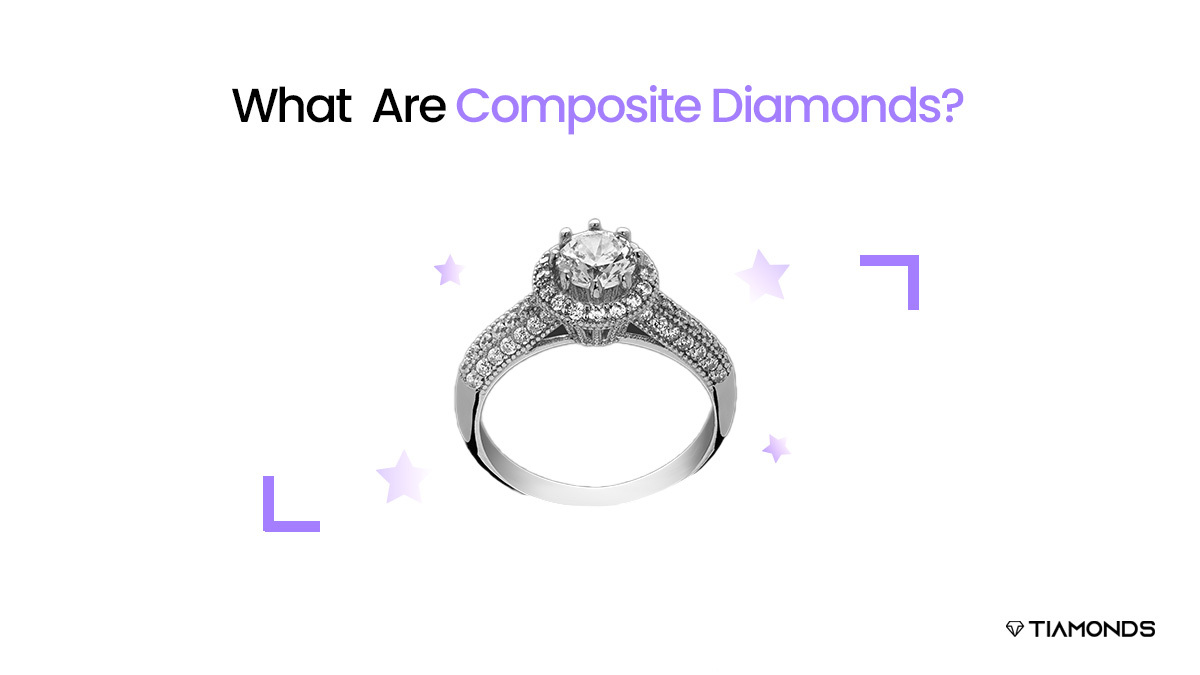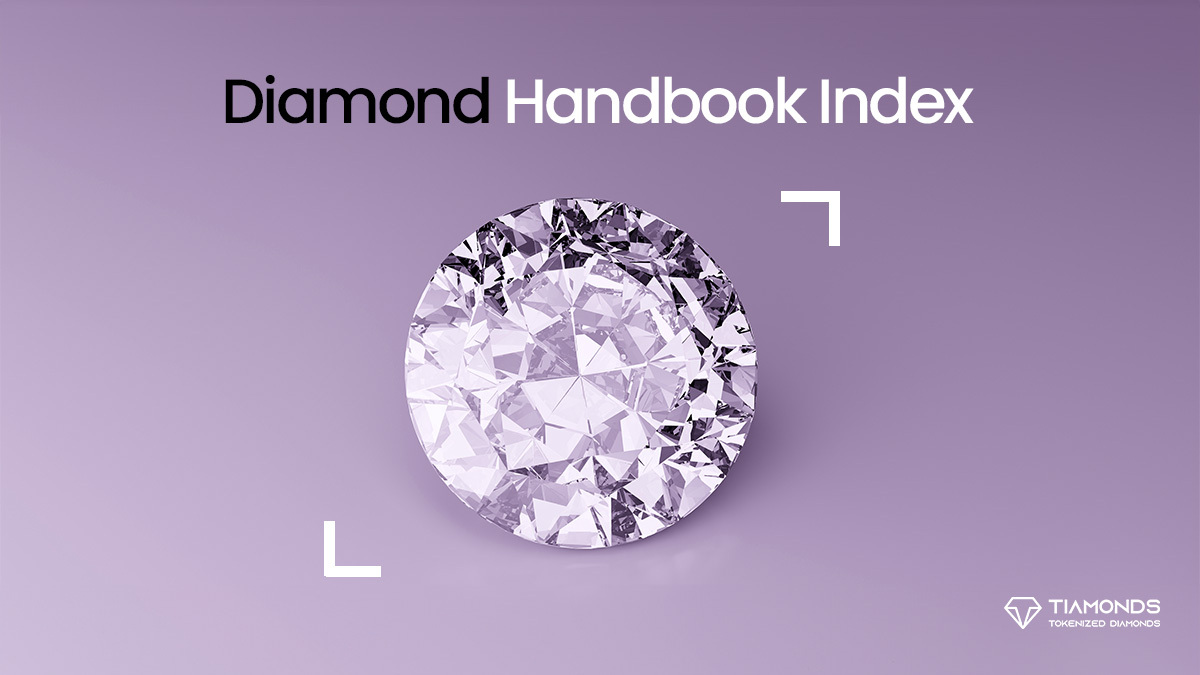In order to accommodate both jewelry enthusiasts and potential purchasers, the complex realm of gemstones frequently offers a confusing assortment. There are multiple options that may occasionally confuse even the most astute individuals. In the midst of this dazzling perplexity, composite diamonds arise as an intriguing topic. It is fusing the enduring appeal of diamonds with skillful craftsmanship.
These diamonds might be the perfect alternative for someone who loves the look of magnificent diamonds but cannot afford them. They inquire as to what a composite diamond is. Clusters of numerous diamonds meticulously come together in close proximity. It often creates the illusion of a single, sizable diamond. Smaller diamonds are occasionally cemented or fused together. But they are often positioned in close contact with one another. In accordance with their placement, the diamonds may produce an intriguing pattern or a singular form.
However, composite diamond rings are not only well-liked for their ability to resemble enormous stones at a fraction of the cost. Moreover, these innovative designs are in high demand due to their vintage aesthetic and elaborate embellishments. It certainly appears too wonderful to be true!
What Are Composite Diamonds?
Minuscule stones are carefully arranged in composite diamonds to create the illusion of a larger diamond ring. This brilliant configuration enhances the allure and brilliance of the ring. While offering a departure from the conventional diamond ring that is well-known to many.
By incorporating both lab-grown and naturally occurring diamonds, composite pieces are able to preserve the renowned hardness attribute of diamonds. Thereby guaranteeing the longevity that is universally associated with the gemstone.
The fabrication procedure of these composite gems entails the meticulous selection and blending of minuscule diamonds, undoubtedly less than one carat in weight, in order to produce a cohesive and augmented visual effect.
The total carat weight (TCW) of a composite diamond ring is the aggregate of the carat weights of all the diamonds combined; this provides a respectable weight at a frequently more affordable price.
On the other hand, due to the smaller sizes and irregular arrangements of the numerous stones, a composite ring or piece of jewelry may not shine as brightly as a single diamond set. As a result, jewelers utilize strategic placements that optimize light transmission, thereby eliciting the highest degree of brilliance and radiance from the composition.
Characteristics of Composite Diamonds
Although these diamonds may exude attractiveness, their aesthetic value is not the only factor to contemplate.
Composite diamonds comprised of lab-grown or natural diamonds possess the same level of durability and hardness as conventional diamond jewelry. Diamonds are among the most abrasive substances on the planet, with a Mohs hardness of 10. However, setting multiple diamonds may compromise stability. As time passes, the likelihood of a stone becoming unfastened increases. Additionally, the minuscule settings of each diamond may be more difficult to inspect. Despite the overall durability of composite diamond rings, they are not regarded as as robust as those set with traditionally fashioned stones.
When constructing a composite ring, jewelers frequently select diamonds that share comparable characteristics in terms of clarity and color. It is crucial to select similar stones when designing a cluster of diamonds so that they appear as a unified jewel. An alternative approach is to set extravagant diamonds or other gemstones into a composite pattern in order to produce an original design.
In addition to brilliance and fire, jewelers consider the orientation of each diamond and its manner of interaction with light. Jewelers optimize the arrangement of diamonds to enhance light performance, thereby increasing luminosity and fire. Composite diamond jewelry, regardless of the number of diamonds in the ring, is typically less lustrous than a single diamond set.
Grading and certification of composite diamonds: The vast majority of them are considerably smaller than one carat. They consequently seldom include certification. Verifying their 4Cs – clarity, cut, and color can therefore be difficult.
Types of Composite Diamonds
Diverse varieties of these diamonds exist.
- Fusing or setting two diamonds forms double-composite diamonds, also known as doublets.
- Triplets consist of three diamonds joined together, forming a triple-composite diamond.
- Multi-composite diamonds consist of either numerous diamonds arranged in close proximity to one another or diamonds combined with other gemstones. These diamonds may differ in size or be identical.
In general, multi-composite stones are the most widely used. One can attain a unified appearance resembling that of a sizable diamond by utilizing numerous stones in an intricate pattern.
Things to Consider When Buying Composite Diamonds
If someone is considering making a composite diamond their eternal possession, the following are some shopping recommendations for these diamonds from our experts:.
Invest in a reputable jeweler; crafting composite rings, which contain so many small diamonds set so closely together, requires considerable skill. Purchasing jewelry from reputed retailers guarantees that careful attention and deliberation have gone into these intricate details.
Inquire about the setting of the composite diamond engagement ring or wedding band; how are the diamonds affixed? Do they require notching, or are they cemented in place? This differentiation will ascertain the probability of damage occurrence and the level of difficulty associated with repair.
It is sometimes necessary to aggregate the individual carats of a composite diamond in order to determine its total carat weight. Therefore, it is essential to calculate each carat individually. The difference between the carat weight of the individual diamonds and the total carat weight determines the price point.
Wrapping Up
With this blog, diamond enthusiasts must have a greater understanding of composite diamonds and how they compare to other types of diamonds. These diamonds are a more cost-effective alternative to the conventional diamond ring when used to create jewelry. One advantageous aspect is that an individual will acquire an identical CTTW (carat and total weight) for a substantially reduced cost in comparison to purchasing an individual stone. Moreover, incorporating these stones into a design is an exquisite way to produce an original creation that is suitable for both formal and casual events.
Individuals seeking a more affordable alternative to traditional diamonds for an engagement ring might consider a composite diamond. The price of a typical diamond can exceed $20,000. Presently, however, the average cost of a composite diamond on the market ranges from $500 to $1500. This could also be a viable option if you are looking to purchase a reasonably priced yet high-quality anniversary ring or other type of jewelry.
It is essential to comprehend the intricacies of these diamonds, including their method of formation, properties, and market standing, in order to arrive at an informed judgment. When acquiring a composite diamond, one should do so with cognizance of both its aesthetic allure and practical




